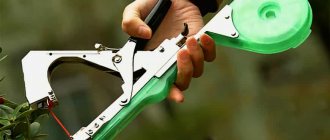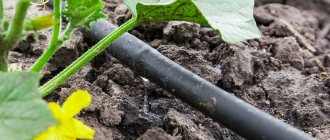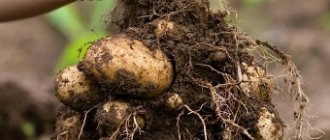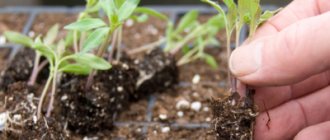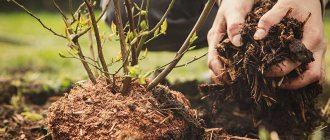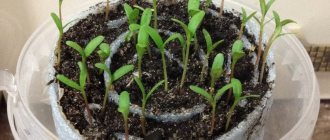From the moment the seedlings are planted in a permanent place, the tomato bed needs daily attention. Watering, fertilizing, treating with various preparations are not the most difficult activities in the garden. What takes gardeners the most effort and time is endless weeding and loosening of the soil. There is a proven method to reduce these labor-intensive operations and even reduce them to a minimum - mulching.
All 7 benefits of mulching for the soil
The method of mulching beds solves many garden problems associated with labor-intensive gardening operations and improves soil fertility in a natural way:
- The protective layer protects the top layer of soil from the effects of temperature changes, precipitation, winds and scorching sun.
- Under shelter, soil microorganisms and earthworms multiply in comfortable conditions. Mulching organic matter decays over time, and the inhabitants of the upper layers of the bed process it into vermicompost. The result is the accumulation of a fertile layer.
- Without access to light, weed seeds under the mulch layer do not sprout.
- Covering the bed allows you to reduce watering to a minimum and forget about loosening. Mulch not only prevents moisture evaporation, but also prevents the formation of a soil crust. The savings in time and effort are obvious.
- Proper use of mulching materials allows you to bring the soil acidity level to the optimal level - if necessary, increase or decrease the pH value to normal.
- Very important for tomatoes: mulch protects plants from soil particles from falling during rain or watering. For this reason, mulched tomato beds rarely suffer from fungal diseases.
- Needles, expanded clay, gravel and other types of mulching materials give beds and paths a neat appearance. The passages between the beds do not become soggy in inclement weather and do not become overgrown with weeds.
Such a long list of advantages would be incomplete without mentioning the negative:
- nonwoven materials are good for everyone, their main disadvantage is cost;
- Synthetic materials should be used with caution, some of them decompose into components hazardous to health.
Using only natural mulch materials for growing home vegetables allows you to obtain environmentally friendly products with minimal time and effort.
Why is it necessary to carry out this procedure in a polycarbonate greenhouse?
A greenhouse creates special conditions for plants that protect them from winds and cold, but this method of growing also has its drawbacks. For example, the rapid evaporation of moisture necessary for the proper development of tomato seedlings.
Mulch will help avoid this. The main tasks of mulching greenhouse tomatoes include:
- do not allow the surface layer of soil in the greenhouse to dry out;
- reduce the number of waterings;
- maintain natural moisture and the most favorable soil temperature for a long time;
- prevent the formation of a crust on the soil, help it remain loose longer;
- protect plants from pests and bacteria found in the ground and on its surface;
- develop beneficial microflora and accumulate nutrients in the soil.
Mulching successfully fights weeds; they cannot grow through the layer of covering materials, which makes the work of gardeners easier on their plots.
What and how to mulch tomatoes
Most often, materials of plant origin are used to mulch tomato beds.
Grass and weeds
Mown grass and weeds are excellent material for mulching tomato beds. It can be used as mulch only before seeding, so as not to introduce additional weeds. They are placed on the bed in a dried form: the grass or weeds should dry in the sun for 1-2 days.
Fresh greens placed between tomato bushes will begin to rot and will only create new problems. To prevent this from happening, it should be stirred periodically.
The advantages of such mulch: when decomposed, the green mass enriches the soil with nitrogen. Particular attention should be paid to legumes and nettles - such mulch combines the maximum content of nitrogen and essential microelements.
Hay and straw
The straw slowly rots. This property contributes to a healthy microclimate in tomato beds. Chopped straw mulch is an excellent prevention of fungal diseases: soil particles do not fall on tomato leaves during rain or watering.
Straw should not be overused - mice can live in a thick layer of mulch.
The hay quickly cakes and rots - the mulching properties are combined with nitrogen fertilizing of the bed. Grass cut for hay may contain ripe seeds. Such mulch can itself become a source of weeds.
Needles
A 4-5 cm layer of needles will reliably retain moisture and stop the growth of weeds. The main advantage of such mulch is that pine needle phytoncides suppress the development of fungal diseases and rot in the tomato bed. This method of mulching increases the acidity of the soil. To maintain the acid-base balance, additional addition of lime or wood ash is required.
Sawdust
Small wood waste (including wood chips, chopped branches, shavings) absorbs nitrogen from the bed when decomposing. To prevent this from happening, it is recommended to add a little nitrogen fertilizer under the mulch layer (20 g/sq. m of urea, that’s 1 tablespoon). Fertilizers will gradually dissolve - nourish the bed and participate in the decomposition of sawdust. Without additional processing, you can use old, half-rotten sawdust.
Compost
Rotted manure, compost, and last year's rotted leaves are the best materials for mulching tomato beds. A loose layer of organic matter not only protects the root system of tomatoes, but also serves as an excellent fertilizer for the garden.
It is not recommended to overuse such mulch, especially in fertile areas. with excess nitrogen nutrition, plants “fatten” - green mass increases to the detriment of fruit formation.
Paper, newspaper and cardboard
Thick paper and cardboard perfectly suppress the growth of weeds and retain moisture in the soil layer. The material is ideal for melons and melons. It’s not very convenient to lay out cardboard on a tomato bed; you have to cut it or tear it. It is recommended to sprinkle pieces of paper with sawdust or wood chips to protect from the wind.
It is not recommended to use newspapers and glossy paper with color printing for mulching. Printing inks contain all the elements of the periodic table and, when released into the soil, form dangerous compounds.
Polyethylene black film
For synthetic materials for mulching beds, water resistance is both an advantage and a disadvantage. Black plastic film prevents weeds from growing and retains moisture.
On the other hand, it does not allow rainwater to reach the roots. The result is that when it rains, the tomatoes lack water.
In clear weather, the black film is strongly overheated by the sun's rays, which can lead to the death of the root system.
Optimal use of film as mulch.
- A drip irrigation system is installed under the film.
- To prevent overheating by the sun, the film is covered with a layer of organic matter - straw or mown grass.
Nonwovens
Black non-woven materials (lutrasil, spunbond, agrofibre, etc.) are used on tomato beds in the same way as black PE film. The main difference between these two polymer products is the water and breathability of non-woven synthetic materials. The edges of the agrofibre sheet are secured along the edges of the bed with boards or sprinkled with earth. The material is durable and reusable. The main disadvantage is its price.
In the garden, mulching is justified not only in the beds. Expanded clay, granotsev, and gravel have proven themselves to be good for mulching passages. The layer must also be moisture- and breathable so that the paths do not become limp in the rain or crack from the scorching sun.
Optimal time
It is important to know not only how and what to mulch tomatoes in a greenhouse, but also when is the best time to do this so as not to harm the seedlings. The time for this process depends entirely on the soil warming up.
- If you have a heated greenhouse, then you can mulch tomatoes at any convenient time, as needed.
- In a greenhouse without artificial heating, it is better to mulch after the soil has warmed up sufficiently (about 15 degrees) and the threat of night frosts has passed.
Despite its ancient origins, the agricultural method of mulching is still popular today. This is the most effective way to increase the yield of greenhouse tomatoes in personal plots. In addition, this method makes caring for tomatoes much easier and saves your time. We wish you good luck in the garden beds!
Open and closed ground - features of mulching
The approaches to mulching tomatoes in open and protected ground are somewhat different.
For closed ground in a greenhouse
The eternal problem of closed ground is room ventilation and stagnation of damp air. Black film significantly reduces air humidity because it prevents the evaporation of water from the soil.
It turns out that black film not only saves water, but also prevents fungal diseases. Before laying the film, the bed should be fed with complex fertilizers or sprinkled with compost. It is advisable to organize drip irrigation - greenhouse conditions are more suitable for this than open ground.
Mulching a protected soil bed has a dual function. Greenhouse vegetables are cultivated using intensive technology. The growing season of tomatoes growing in a greenhouse is almost 2 times longer than in the ground. It is not surprising that they require 2 times more nutrition for full fruiting. Therefore, for greenhouse conditions, it is imperative to choose mulching material:
- which either itself quickly decomposes into nutritional components;
- which allows artificial feeding to be carried out in the most convenient way.
Compost and mature humus are the best options for greenhouse tomato crops. It is advisable to apply a layer of at least 5 cm. In the absence of organic matter, use almost any light-proof material.
In the video, the author talks about how he mulches tomato bushes when it is necessary to trim the leaves.
Features of mulching ground tomatoes
In an open-air tomato bed, the growth conditions are far from greenhouse conditions.
They are more susceptible to wind erosion: a combination of water, wind and sunlight turns the topsoil into rocky soil. Plants perceive even a lack of water not as painfully as the appearance of a dense crust that disrupts air exchange processes.
The mulching material must meet these conditions. The same black polyethylene can only be used in combination with a heat-insulating layer of straw or sawdust.
Preference should be given to organic materials - compost, leaves, chopped straw, etc.
The second most important criterion is light resistance. The mulch layer should be at least 5 cm, then weeds will not be able to break through to the light.
Which mulch is best?
There are two types of mulch for tomatoes:
- Organic. Consists of natural components such as sawdust, straw, bark, pine needles, compost, leaves, grass, etc.
- Inorganic. These are artificial materials (film, paper, cardboard and others).
Experienced gardeners advise using natural materials to mulch tomatoes in a polycarbonate greenhouse. They gradually decompose, turning into humus, and become an excellent fertilizer for tomatoes, which promotes active plant growth. There is a separate article about which organic covering materials are the best for tomatoes in a greenhouse.
You cannot mulch tomatoes with fresh manure, it will burn the roots of the tomatoes; pure peat is not recommended either - this will lead to severe oxidation of the soil, which will stop the growth of plants.
How not to mulch a tomato bed
Mulching beds does not always bring only benefits. There are restrictions on the use of synthetic materials:
- roofing material can only be laid “crumbs” (powder) up, so that the bitumen impregnation gets less into the ground;
- the use of plastic film creates a pronounced greenhouse effect, which can lead to the death of the root system of tomatoes;
- under materials with poor breathability (film, cardboard, etc.) slugs and insect colonies find shelter;
- paper and cardboard for mulching should only be used without prints and printing ink, which contains carcinogens.
Mulching a tomato bed is a creative process. The list of materials can be expanded endlessly. Surely, there is a hidden reserve of fertile mulch near the garden. The correct approach to covering the top fertile layer of the garden bed will allow you to grow a rich harvest without any extra effort.
Characteristics of tomatoes
Nature intended the tomato to be a perennial plant. But in the garden we grow it as an annual crop, the growth of which, depending on the variety, can range from 20 cm to two meters. In order for tomato bushes to grow well, they first need fertile soil with a neutral acidity level. Quite loose and pre-fertilized with complex mineral fertilizer. Tomatoes need nitrogen, potassium and phosphorus.
When planting, you must follow the rules of crop rotation. And never plant tomatoes where nightshades grew the previous year. Namely: potatoes, peppers or eggplants. The ideal place would be after cucumbers, onions, beets or carrots. And next to the tomatoes you can place celery and garlic. And also spicy herbs. Joint planting with marigolds or calendula will provide additional protection against pests.
The optimal air temperature for tomato growth is +25 degrees, perhaps a little more. At temperatures above +32...+33 degrees in the greenhouse, plant pollen is sterilized. And they stop forming ovaries.
Tomatoes are grown using the seedling method, sowing the seeds a couple of months before the plants are supposed to be transplanted into the ground. When transplanting to a permanent place, you must maintain a distance between plants of at least 40-50 cm. Sometimes more. For example, the Mongolian Dwarf bushes do not grow upward. And in width they reach a meter in diameter.
Tomatoes are transplanted to a permanent location in May or June. As a rule, water once a week. If necessary, remove the stepsons and install supports. They also tie up the bushes so that they do not break under the weight of the fruit. From mid-summer you can start harvesting from early varieties. To make the conditions for tomatoes more comfortable, and at the same time make caring for them a little easier for yourself, there are a number of agricultural techniques. One of them is mulching tomatoes.
What materials should not be used
There are a number of materials that seem suitable for mulching, but are not recommended for use:
- Peat is useful if mixed with soil in certain proportions. But as a mulch, pure peat will greatly increase the acidity level of the soil. Which will have an extremely adverse effect on the growth of tomatoes.
- Manure can also be useful as a fertilizer after it has rotted. But when fresh it is almost guaranteed to burn plant roots.
- Ruberoid - on the one hand, it can be used forever. It will also perfectly prevent the germination of weeds. But this material is usually quite toxic. Especially in hot weather when it gets hot. So it’s better to refuse it too.
Types of protective coating
Various materials are suitable for the protective layer, which are divided into two main types - inorganic and organic. Artificial materials used for mulching include:
- roofing felt;
- agrofibre;
- agrofabric;
- lutrasil;
- spunbond;
- black polyethylene film;
- dense fabric like burlap or tarpaulin.
Organic mulch includes: straw, hay, compost, peat, cut weeds without seeds, pine, less often spruce needles, bark, wood shavings and sawdust, green manure, cardboard, paper, newspapers, grass, leaves, sunflower seed husks, branches and leaves.
Each of these materials has its own pros and cons, so it is not always possible to get the expected effect from mulching tomatoes.
